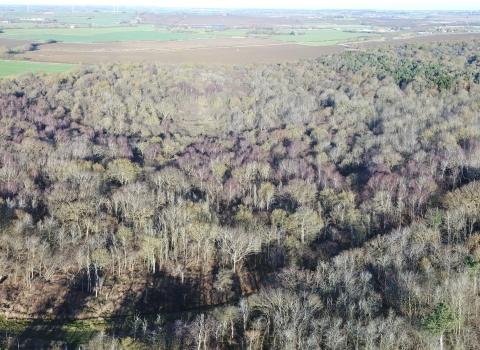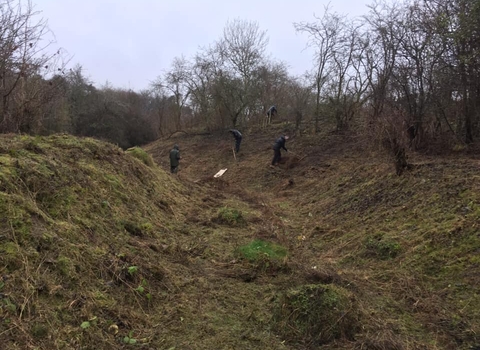At the ripe age of 900 years old and with a mention in the Domesday Book, Brampton Wood is the second largest ancient woodland in the county. Spanning 132 hectares there are more than 340 plant species which are home to birds - sparrowhawks to nightingales, badgers and butterflies - black hairstreak, one of Britain’s rarest butterflies, has several colonies in the wood, plus purple and white-letter hairstreaks, brown argus, white admirals and silver-washed fritillary.
As custodians of this important natural commodity the Trust have a responsibility to ensure its next 900 years . . . this means staff and dedicated volunteers managing the wood for its maximum long-term benefit - part of which involves gradual annual removal of conifer plantations (areas of Scots pine, Corsican pine and Norway spruce were introduced in the 1950s by the Forestry Commission), encouraging the regeneration of native deciduous woodland trees in their place.
Pioneering plants like bramble soon form dense shelters for many nesting birds and young broadleaf shrubs and trees grow through to provide additional habitat. In time these will shade out the bramble with the surrounding ancient woodland wildflowers moving in through seed spread by animals or the wind, and in time the areas will become dense stands of native plants and trees.
In recent years, the autumn work has also turned to the restoration of relict hazel coppice and the removal of dense young growth ash stems. These areas were once frequently worked for their coppice materials, which created a mosaic of habitat stages and densities, from open ground through dense thickets to mature stands of trees. However, the wildlife that depends on this mixture of growth stages has lost much of the young growth habitat in our woods as it matures and it is only with the restoration of these areas we can ensure they have somewhere to survive.
So every autumn the wood temporarily closes to allow all this necessary work to happen, and contractors with heavy machinery move in to fell trees and extract as logs. This year work began on 17 September and is expected to take around four weeks. Year on year more conifers are removed and in recent years the Trust have surveyed with the use of a drone (flown by a licensed Trust pilot) to capture aerial images and create useful 3D imaging to chart the conservation progress that is being made - see more below left.
Eventually conditions will be ideal for the further recolonisation and flourishing of more primroses, bluebells and other ancient woodland plants. Into this delicate woodland balance hazel dormice were reintroduced in 1992, making their homes in layers of hazel, now with a thriving population monitored by staff and volunteers. An award-winning film was made by Ellie Bladon in 2019 charting the dormouse introduction work by the PTES, and their ongoing monitoring by staff and volunteers.


